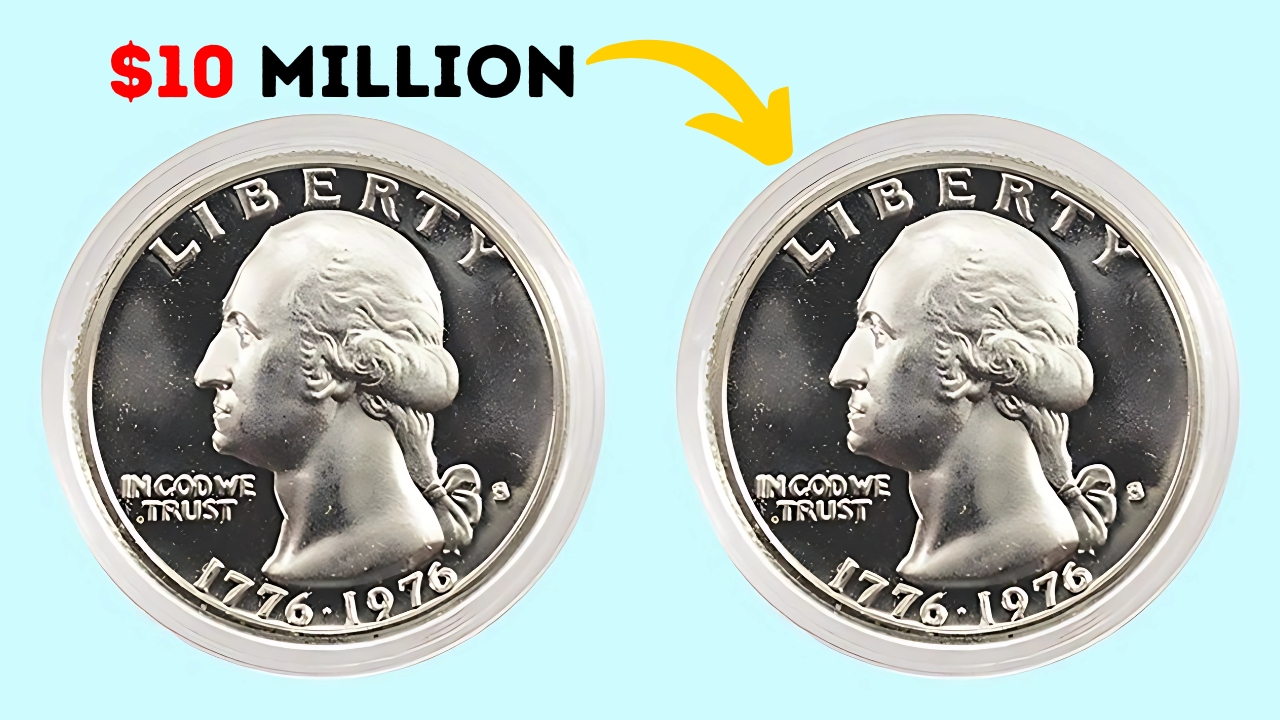5 Rare Bicentennial Quarters : Nestled within neglected change jars, tucked into sofa cushions, or perhaps unknowingly exchanged in everyday transactions, five remarkable Bicentennial quarters are turning into numismatic myths.
Each valued at an astonishing $10 million, these coins symbolize the rarest finds—true unicorns amid the 1.7 billion Bicentennial quarters minted between 1975 and 1976, celebrating America’s 200th birthday.
Among these five coins, the most intriguing arose from what experts refer to as a “perfect storm” of mint errors.
Dubbed the “Dual-Strike Overlay,” this quarter underwent two complete strikes at 90-degree angles to one another, resulting in a captivating overlay effect where both the drummer boy and colonial soldier images can be seen from various angles.
To add to its uniqueness, this coin inadvertently combined copper-nickel and silver-clad metals, producing a one-of-a-kind metallic marbling effect never previously recorded in American coinage.
When scrutinized under specialized lighting, minute imperfections disclose that this coin was minted at the Denver Mint during the midnight shift on July 4, 1976—a poetic detail that significantly amplifies its historical importance and value.
The Missing Drummer Quarter: The Phantom Imprint
The second $10 million rarity showcases a remarkable die error where the drummer boy design on the reverse manifests as a ghostly outline—present, yet subtly absent, primarily visible through the reflection of light rather than by touch.
Numismatists call this the phenomenon of the “phantom imprint,” a state so rare that only three other examples can be found across American coinage.
Compounding this enigma, microscopic analysis unveiled traces of experimental alloys that the Treasury briefly considered but ultimately rejected for the Bicentennial program.
The origin of these elements in production is currently one of numismatics’ biggest enigmas.
The Triple-Edge Quarter: Defying Physical Possibility
Arguably the most perplexing to coin experts is the “Triple-Edge Quarter.”
This coin features what seem to be three distinct edges—the standard reeded edge, along with two additional raised bands that create a terraced profile effect.
Former Mint Director Thompson expressed that the Triple-Edge “simply shouldn’t exist within the physical limitations of modern minting processes.”
This factor of impossibility, combined with its flawless strike and pristine surfaces, propelled its valuation into eight figures after authentication in 2018.
The Silver-Core Quarter: The Secret Experiment
The fourth $10 million quarter is known for holding what collectors have dubbed “the forbidden core”—a 99.9% silver center encased within a copper-nickel exterior.
Recent revelations from declassified Mint documents indicate a limited experimental batch was produced to explore potential Bicentennial special editions; however, all were reportedly destroyed when the Treasury decided against pursuing the costly design.
Authentication revealed microscopic drill marks where core samples had apparently been taken prior to the coin’s release, hinting that it underwent metallurgical testing before evading destruction.
The coin’s journey from a government lab to private ownership remains undocumented, creating an intriguing historical void that raises both its mystique and value.
The Double-Date Quarter: Temporal Impossibility
The final $10 million rarity, found in a rural Minnesota cash register in 2017, unexpectedly bears both the familiar 1776-1976 dual date and a partially visible 1975 date underneath.
This “Double-Date” quarter violates all production timelines, as the dual-dated dies were introduced only after the 1975 date dies were decommissioned.
Former Mint engraver James Ferrell proposed a remarkable possibility: “This coin may represent a transitional piece resulting from an unauthorized test strike during die development—something that absolutely should have been disposed of.”
Its existence indicates either a conscious act of preservation by a mint employee or an extraordinary lapse in quality control.
The Hunt Continues
While these five quarters have been authenticated and are currently held in private collections or museum vaults, numismatic specialists believe that more such examples may still be circulating, unnoticed.
Despite the estimated odds of one in 340 million, dedicated collectors fervently examine every Bicentennial quarter they come across.
As Pennsylvania coin dealer Eleanor Westbrook eloquently stated, “These coins represent a perfect blend of historical importance, minting improbability, and extreme rarity.”
Finding one would be akin to winning the lottery without even buying a ticket. Yet, unlike most treasures, these might actually be hiding in plain sight, potentially nestled in someone’s pocket at this very moment, just waiting to change their life forever.
If you’re feeling inspired to dig through your spare change, experts advise looking for unusual weight, distinct sounds when dropped, or visual oddities when comparing with standard Bicentennial quarters.
Just remember—the next time you collect your change for that cup of coffee, you could be holding a small fortune in your hands.
